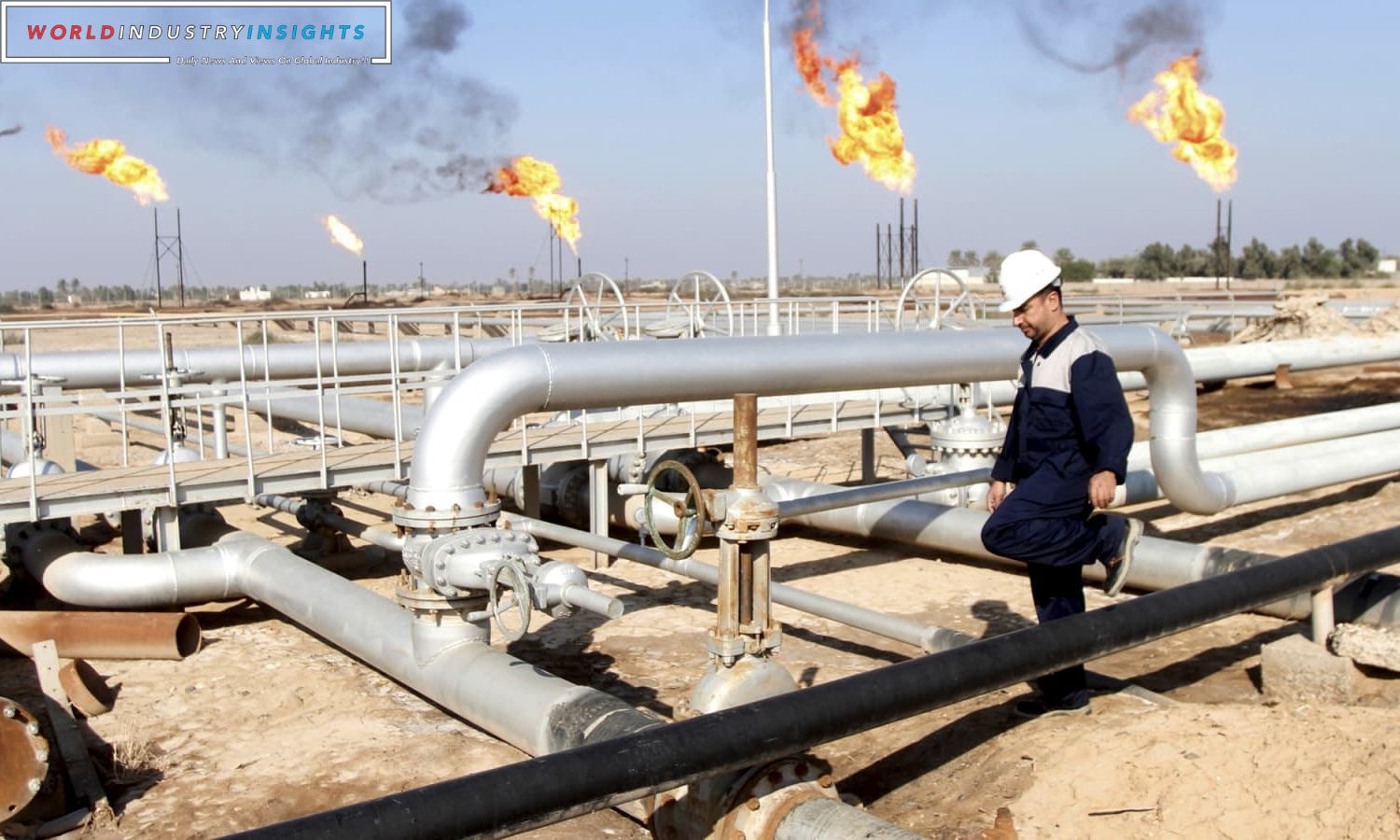Oil Sharp Plunge: Oil prices plummeted 5% on Thursday, their lowest level in four months. Due to weak U.S. and Asian economic indicators, investors worried about global oil consumption. Brent futures suffered a substantial setback, plummeting by $3.76 or 4.6% to settle at $77.42 a barrel. Simultaneously, U.S. West Texas Intermediate crude (WTI) experienced a significant dip, shedding $3.76 or 4.9%, closing at $72.90. This downward trend saw both Brent and WTI hitting their lowest levels since July 7, at $76.60 and $72.16, respectively.
Compounding the market’s unease, both WTI and Brent’s front-month contracts traded below their later-dated counterparts, a scenario referred to as contango. Phil Flynn, an analyst at Price Futures Group, painted a grim picture, noting, “The mood is negative, the charts are negative. It’s going to take something to change that mood, and until then, people will ride it down until they realize it’s overdone.”
The anxiety intensified with the surge in Americans filing new claims for unemployment benefits, hitting a three-month high and indicating an ongoing ease in labor market conditions. This worrisome trend was further underscored by data revealing a drop in U.S. retail sales for the first time in seven months in October, signaling a slowdown in demand at the start of the fourth quarter and reinforcing expectations that the Federal Reserve is wrapping up its interest rate hikes.
Also Read: Oil Prices Slide: U.S. Supply Surge and Chinas Demand Woes Spur Concerns
Despite earlier predictions from OPEC and the International Energy Agency (IEA) about potential supply tightness in the fourth quarter, recent U.S. data has contradicted this, revealing ample inventories. Additionally, concerns were raised over the expected slowdown in Chinese oil refinery throughput, as runs eased in October due to weakened industrial fuel demand and narrowed refining margins.
In a mixed economic scenario, Chinese economic activity in October portrayed a contrasting picture, with industrial output increasing at a faster pace while retail sales growth surpassed expectations. Tamas Varga, an oil broker at PVM, offered insights, stating, “The current price drop is taking place amid a seemingly auspicious backdrop, which suggests that investors simply do not buy into the ‘Q4 stock draw’ narrative; something that is not backed up by the recent weekly EIA reports either.”
Israel-Hamas hostilities in Gaza added geopolitical complexity. US officials replied by threatening oil sanctions against Iran, a longtime Hamas supporter. Economics and geopolitics have clouded the oil market, making investors leery of future events.
Our Reader’s Queries
How many years of oil is left in the world?
The world’s oil reserves are currently at 46.6 times its annual consumption levels, which translates to approximately 47 years of oil left (excluding unproven reserves).
Why did oil fall in 2014?
The significant drop in crude oil prices from June 2014 to January 2015 can be attributed to the impressive expansion of U.S. tight oil production. This has been the primary driving force behind the 60 percent decline in oil prices during that period.
Did oil prices plunge more than 3 on demand concerns?
On Tuesday, oil prices dropped by over 3%, hitting their lowest point in six months. This was due to concerns about oversupply and an unexpected increase in consumer prices according to recent U.S. economic data.
Where is the next price for oil?
Our analysis predicts a rise in the Brent crude oil spot price, with an expected increase from $78/b in December to $84/b in the first half of 2024. This is due in part to the recent OPEC+ production cuts. However, despite these cuts, we have revised our forecast for the Brent price in 2024 to a lower level.


